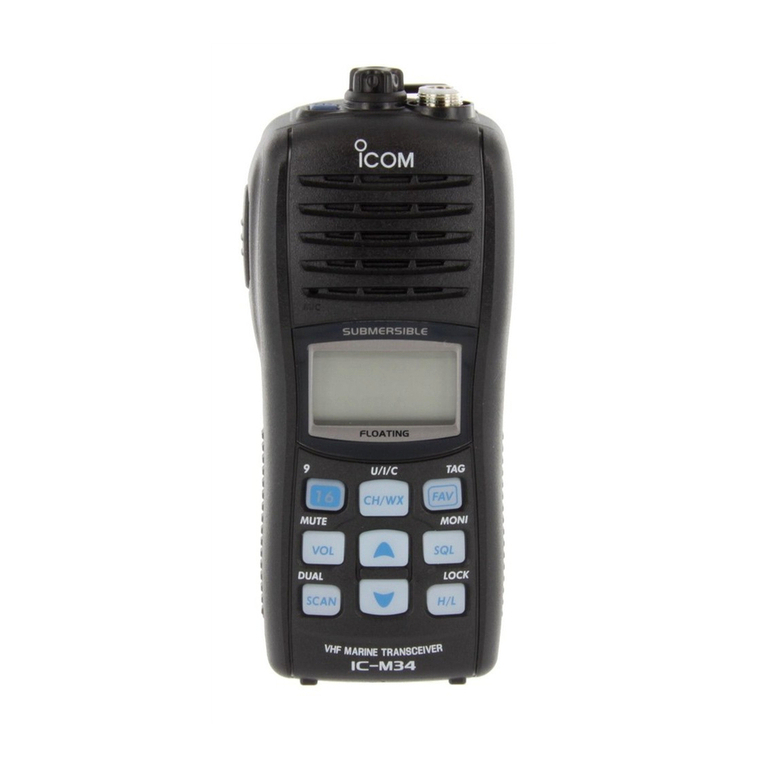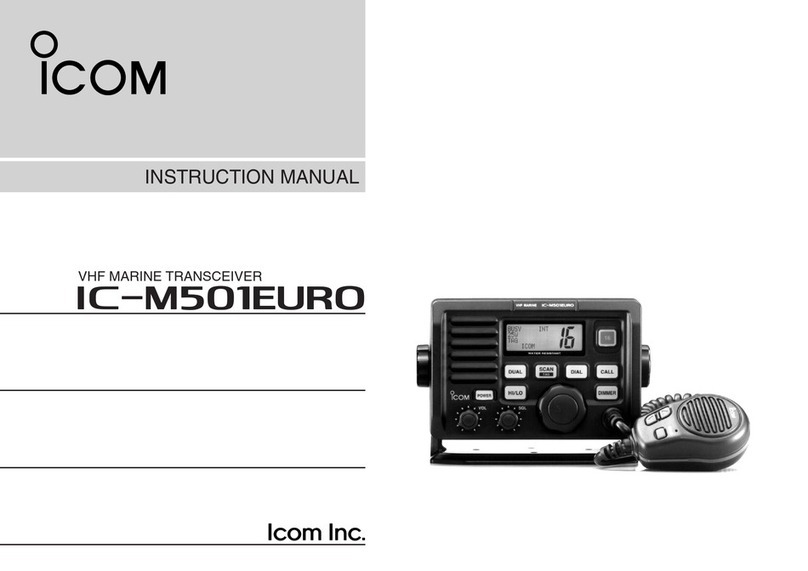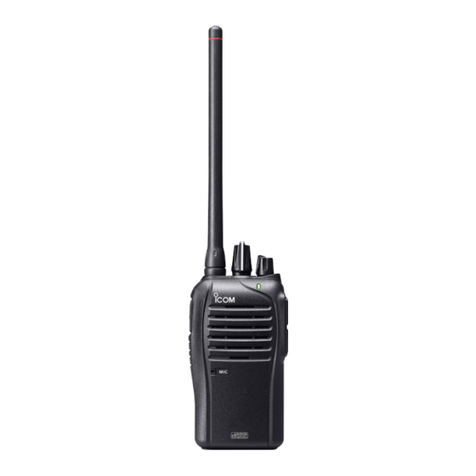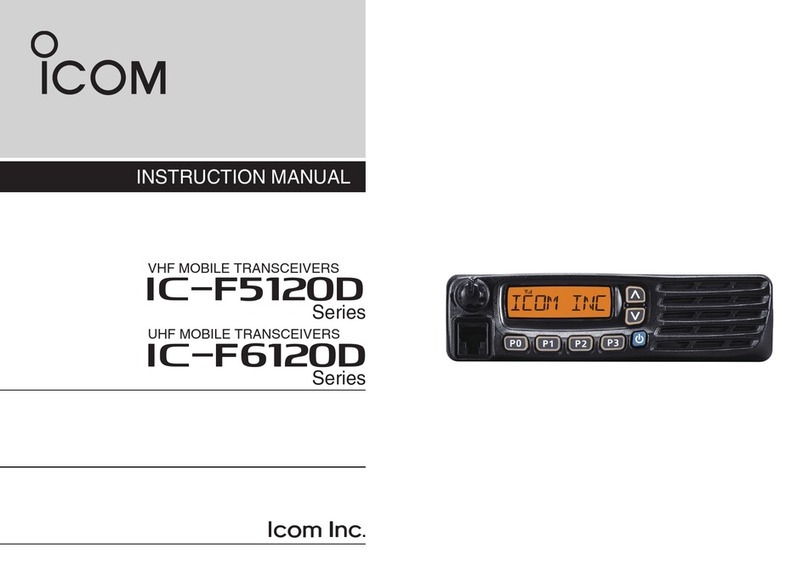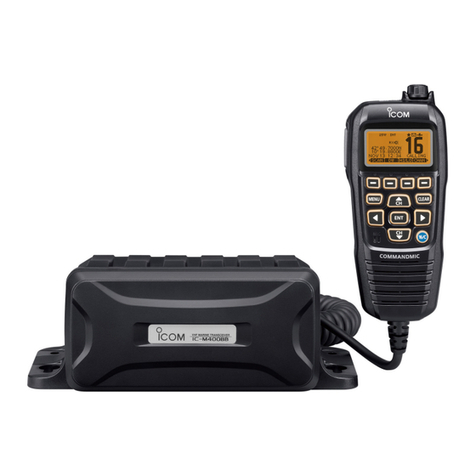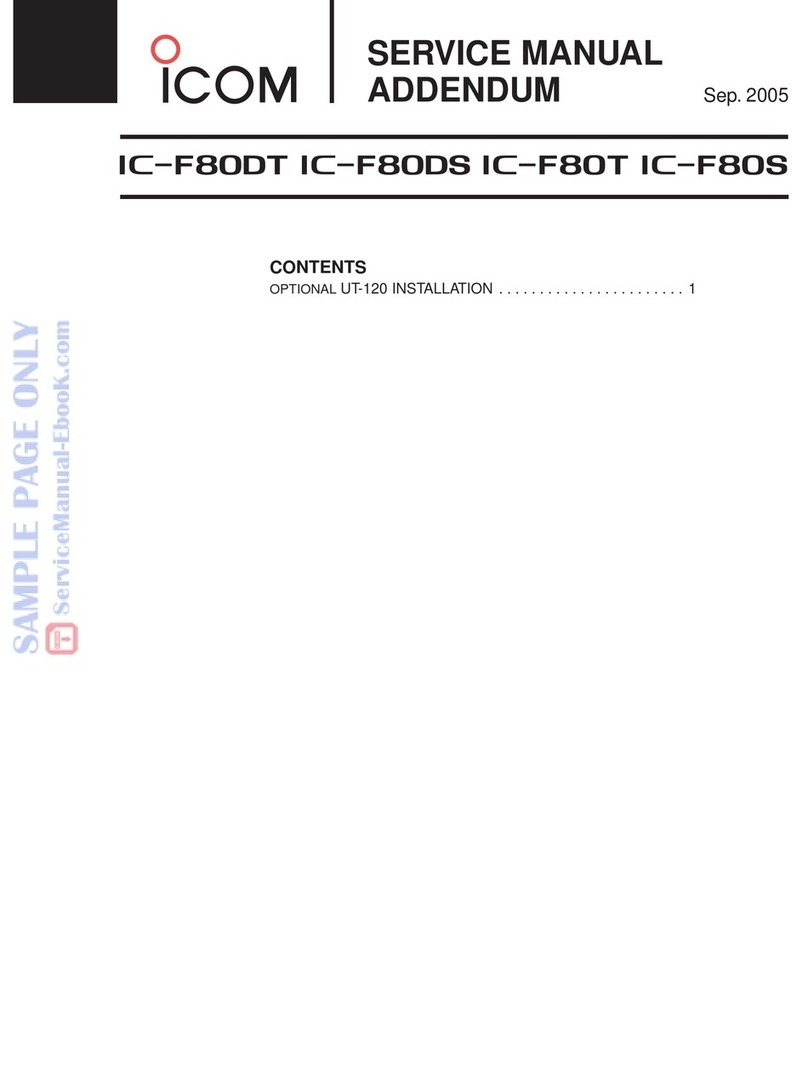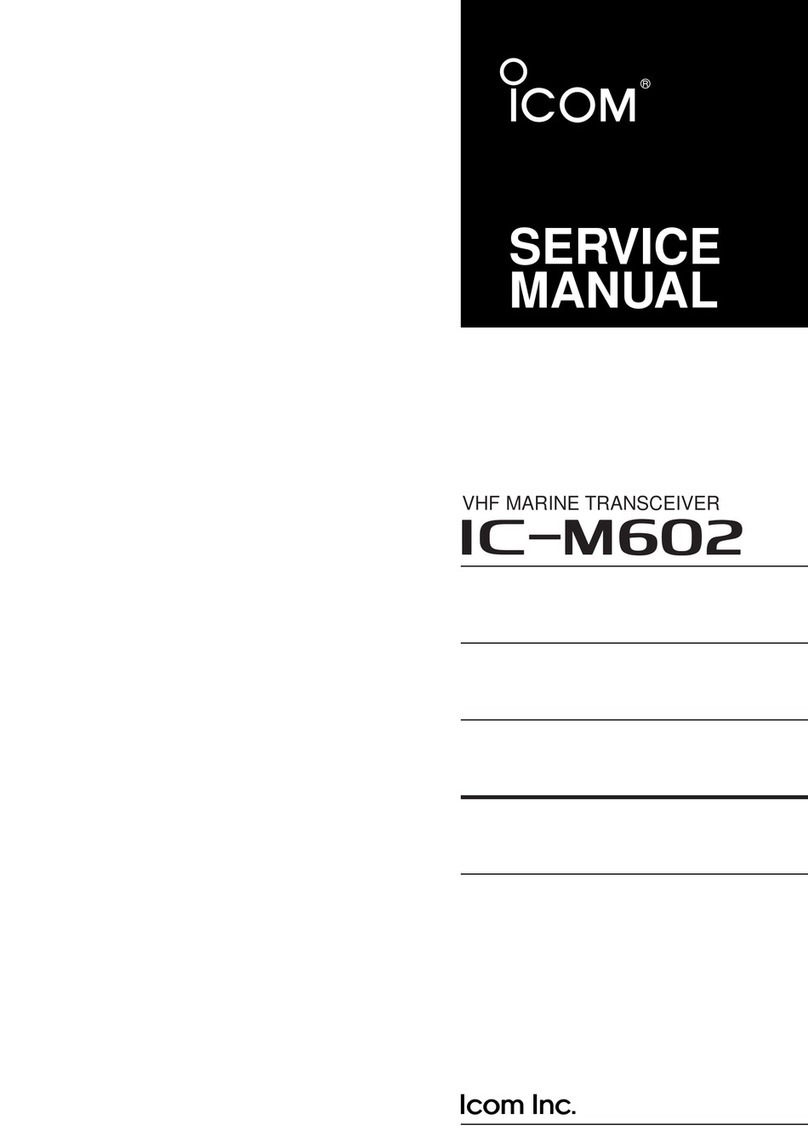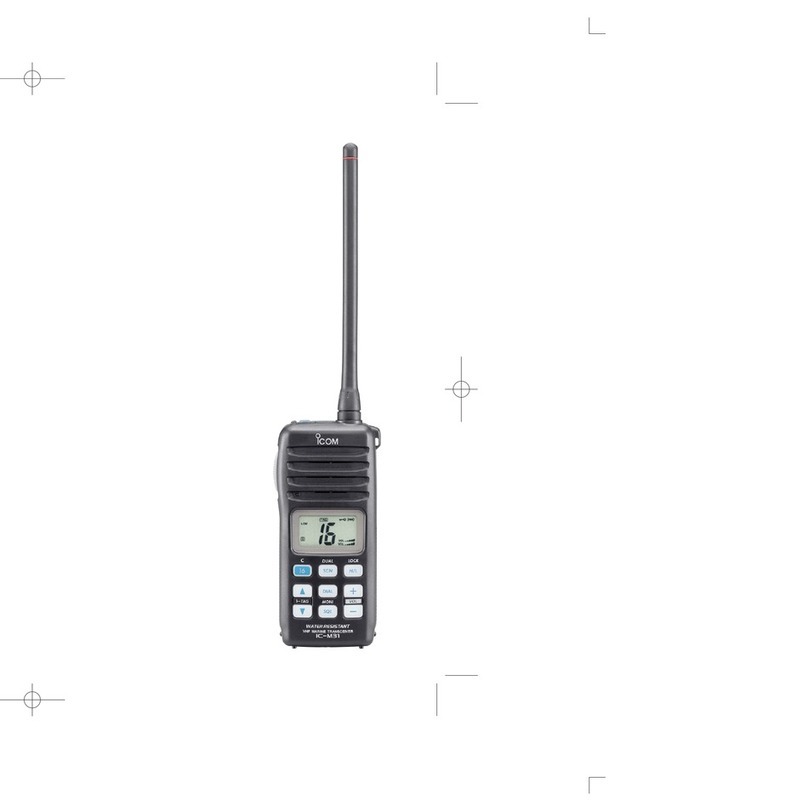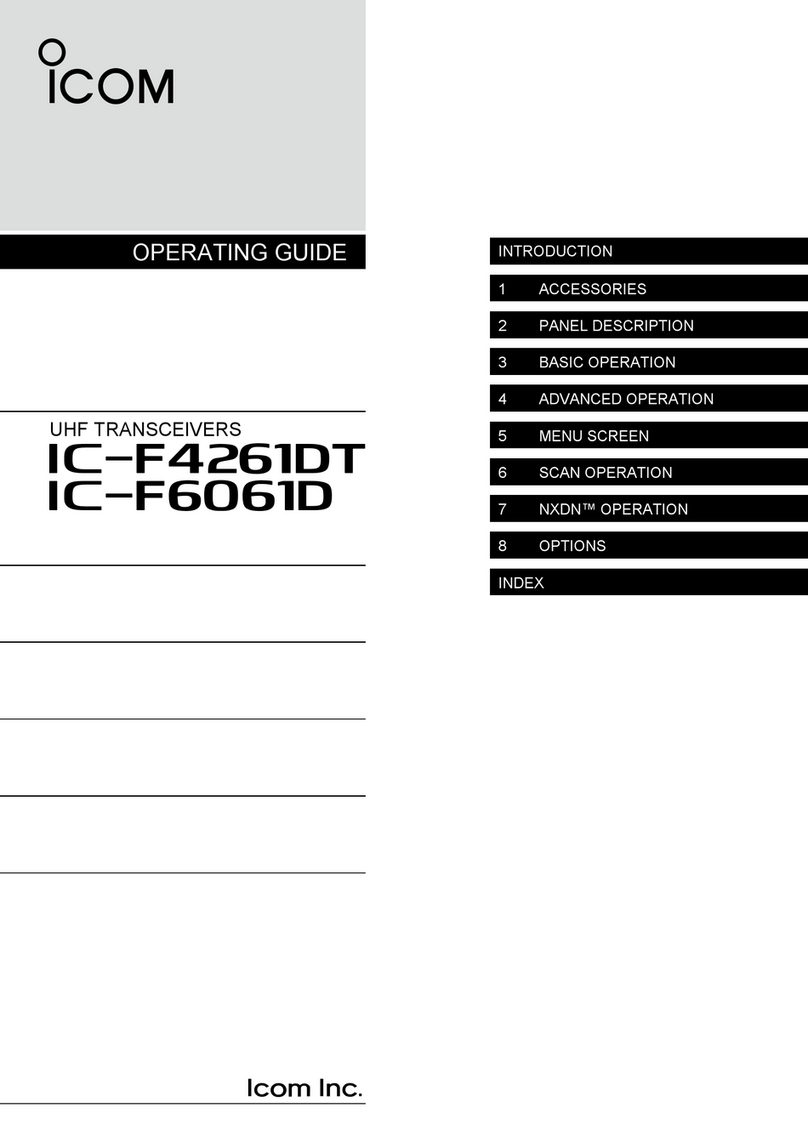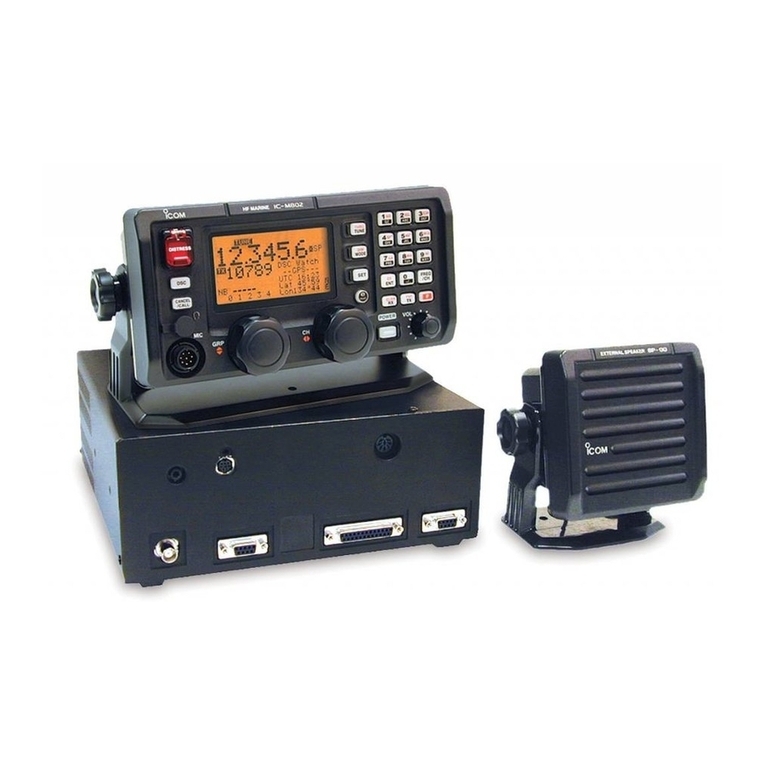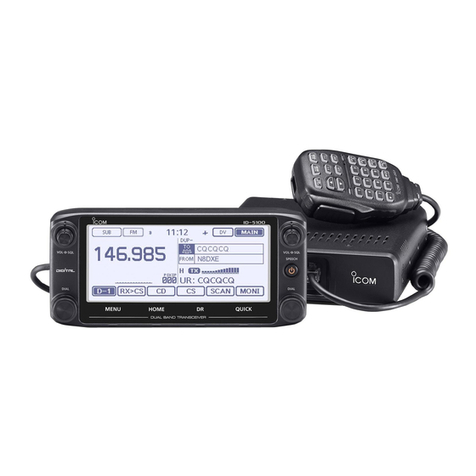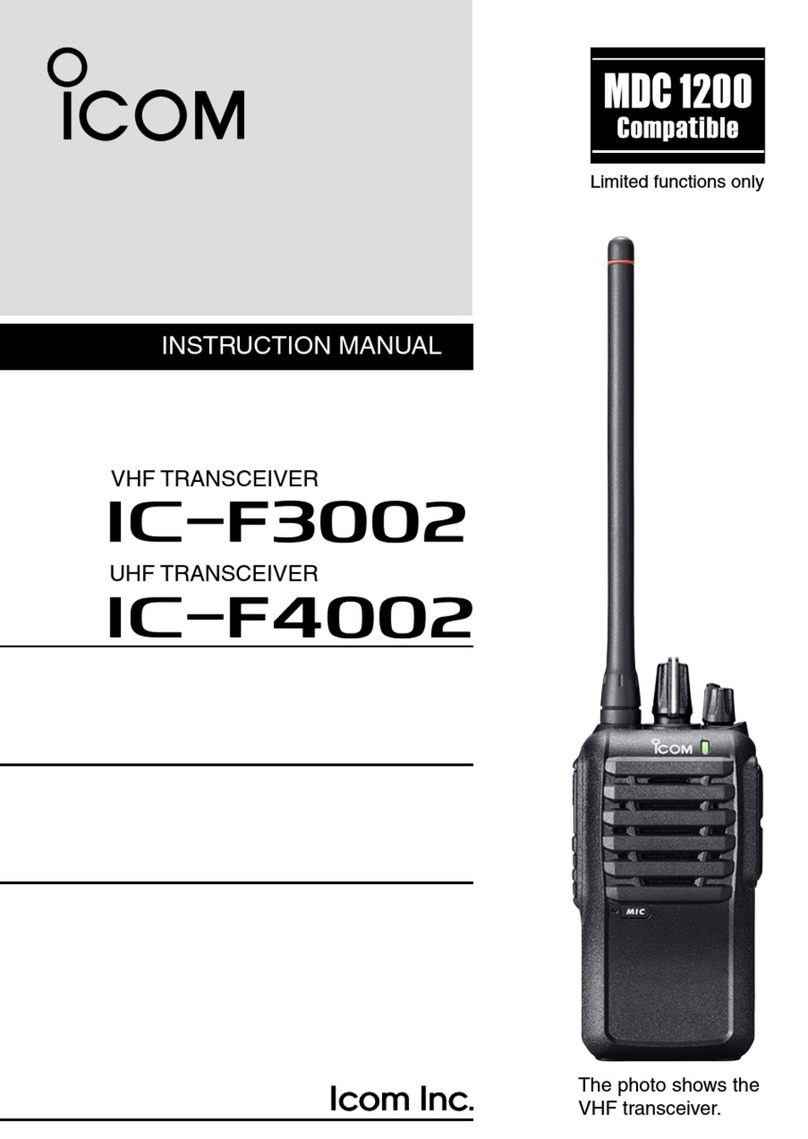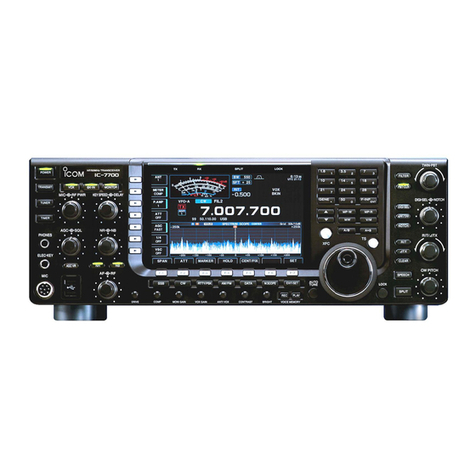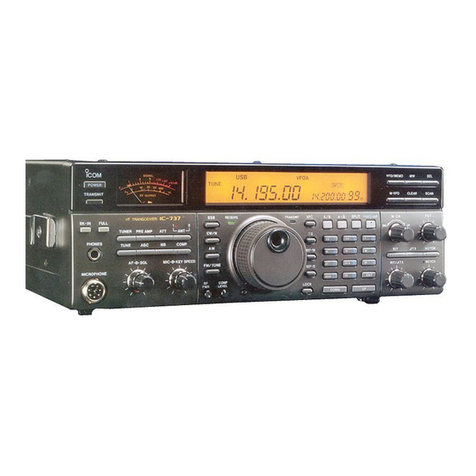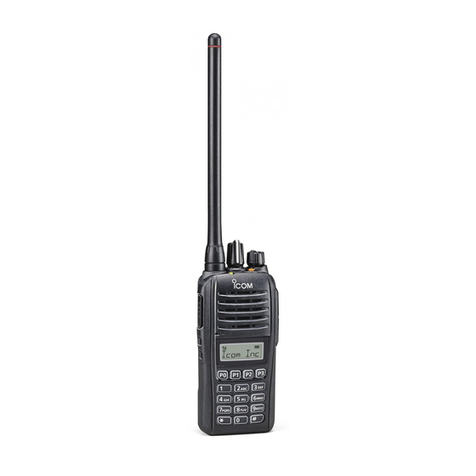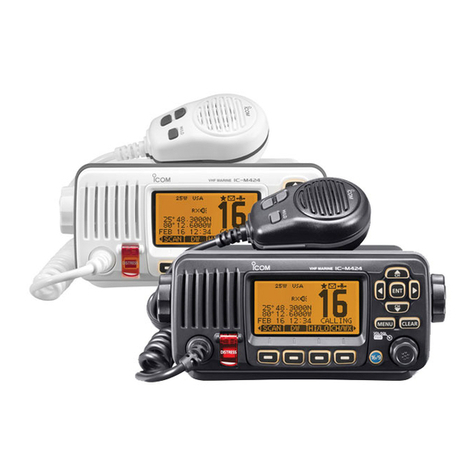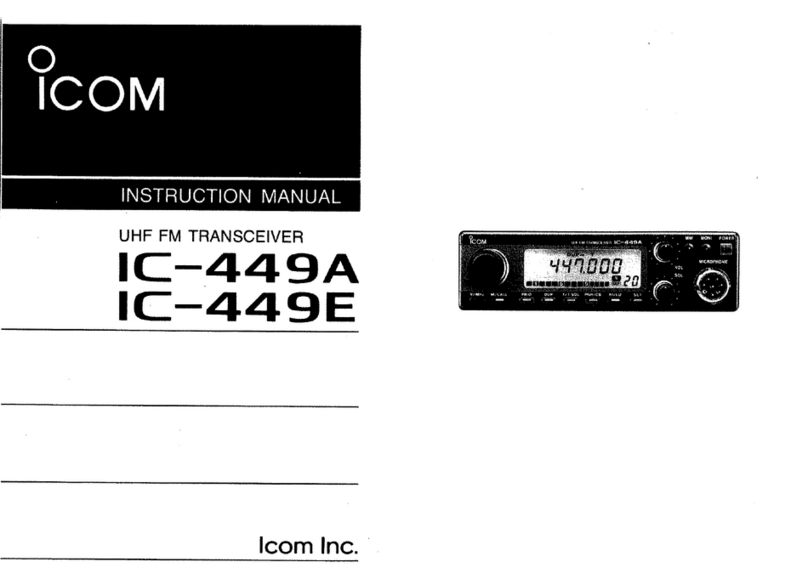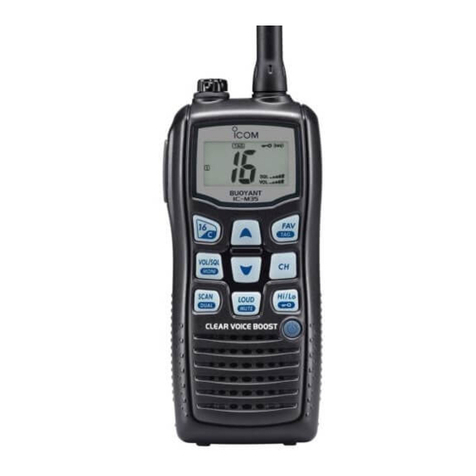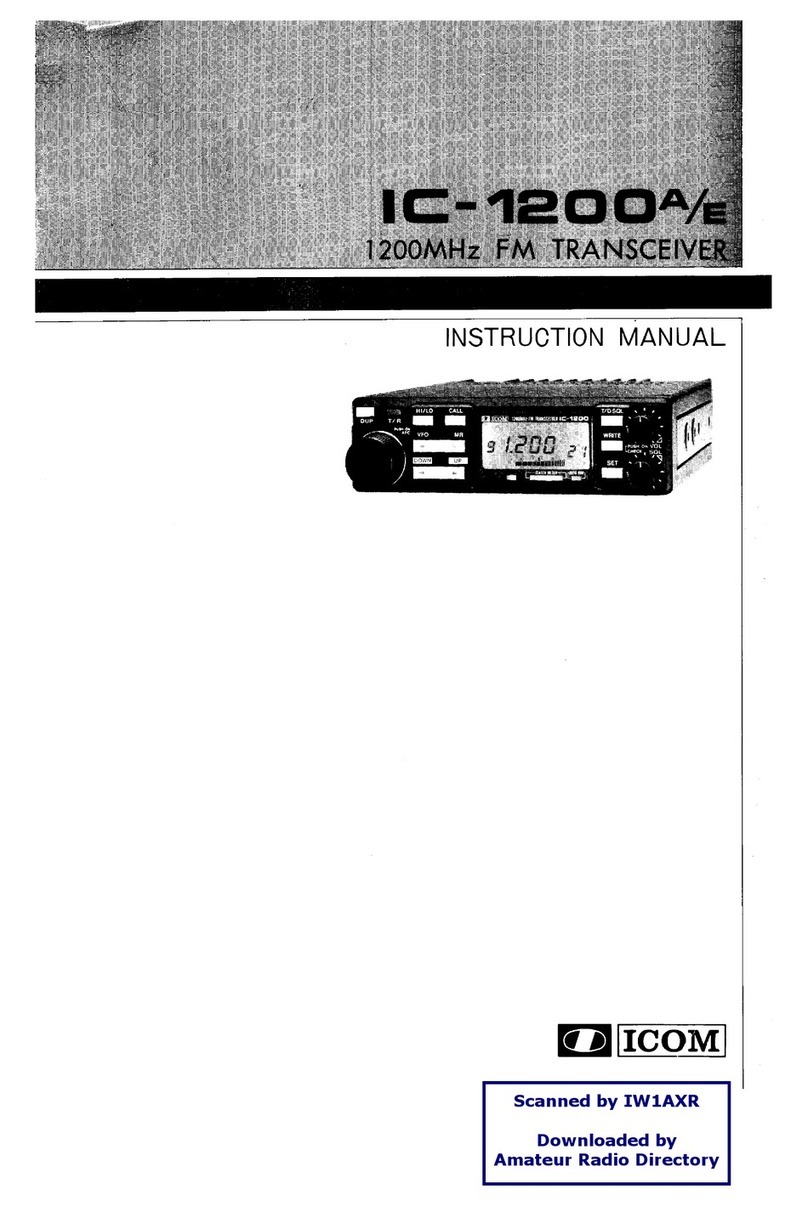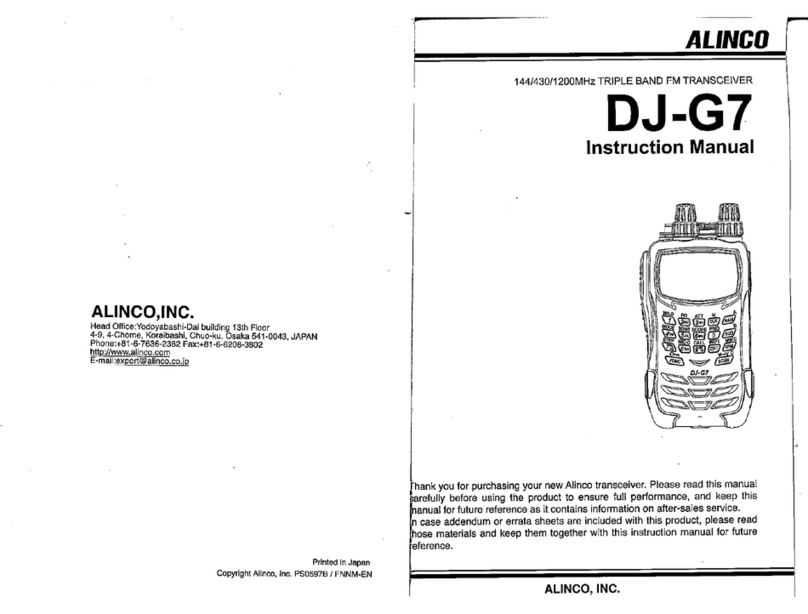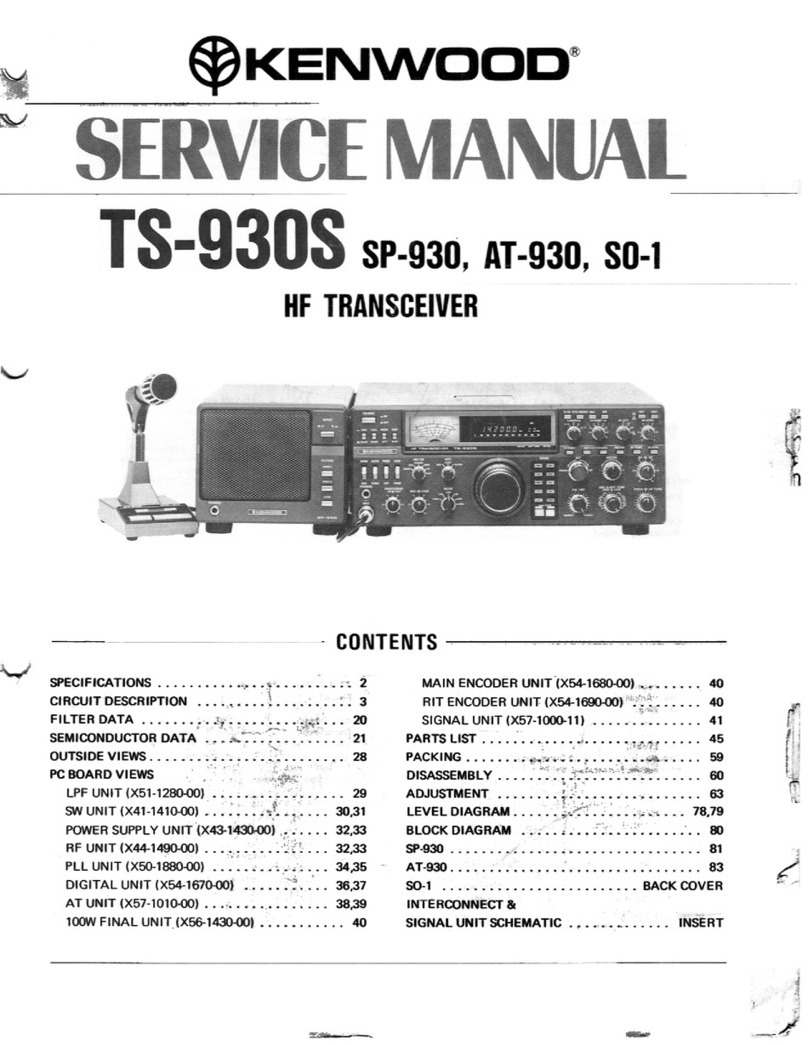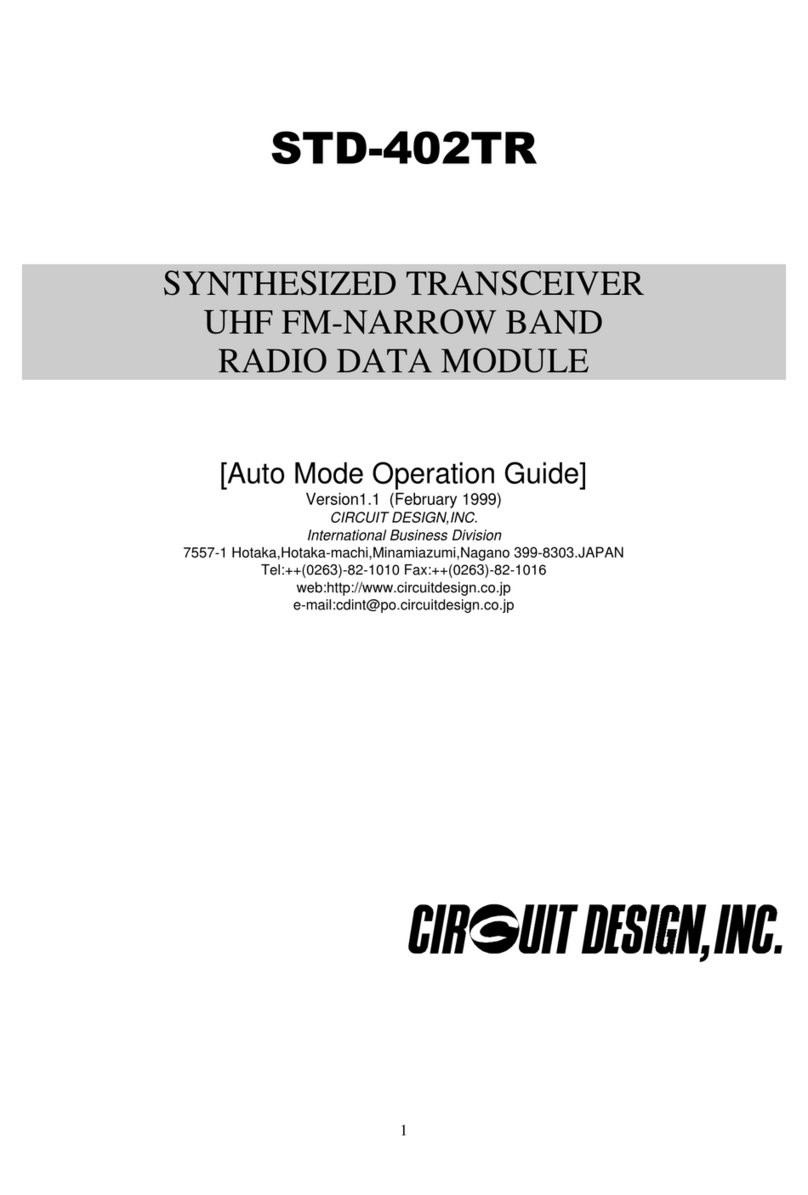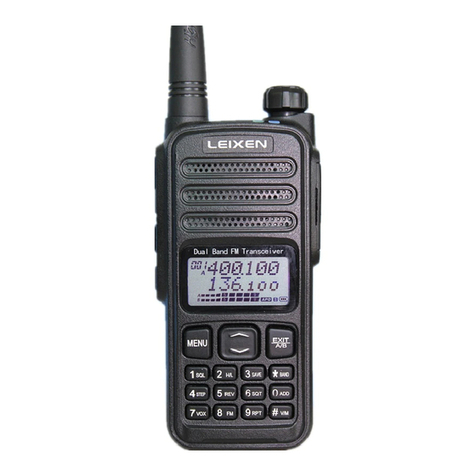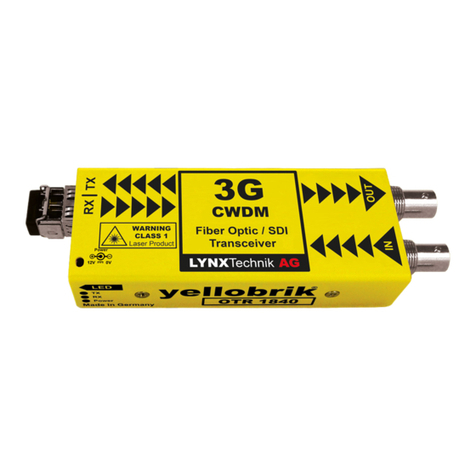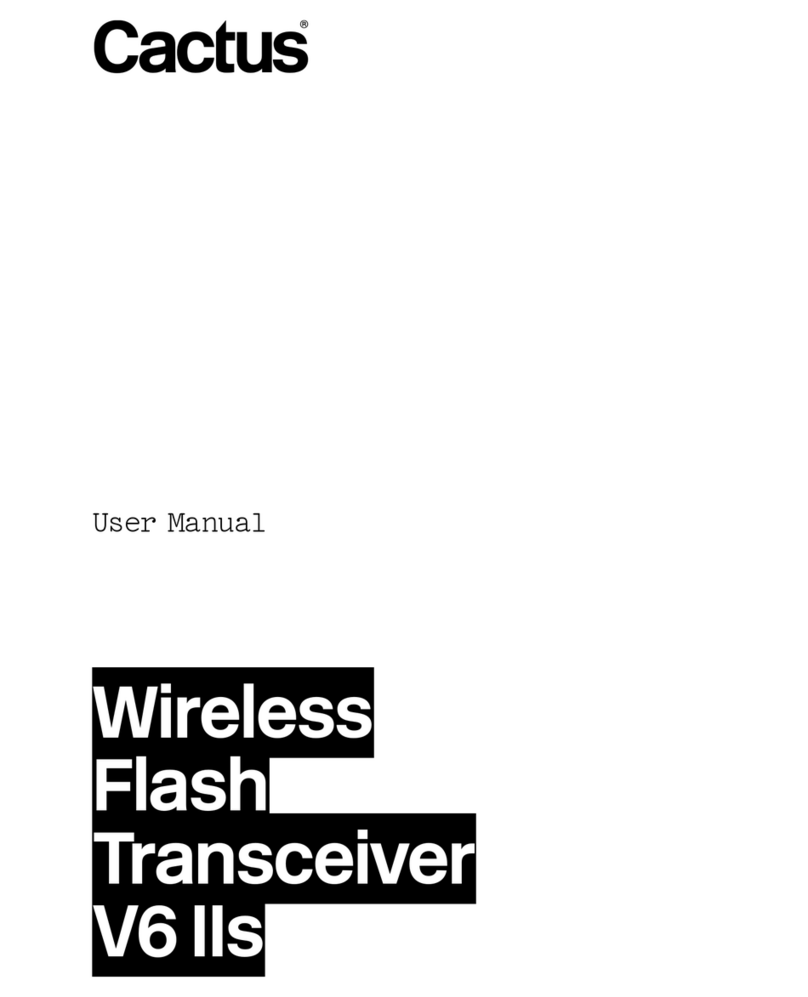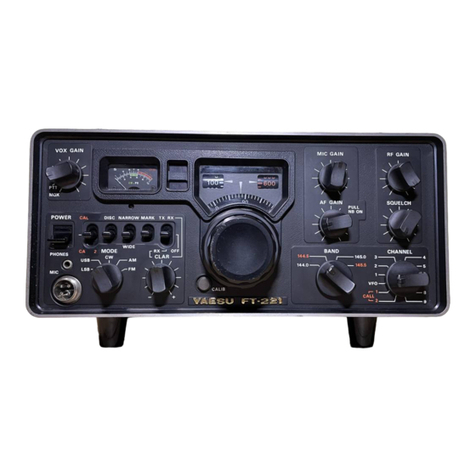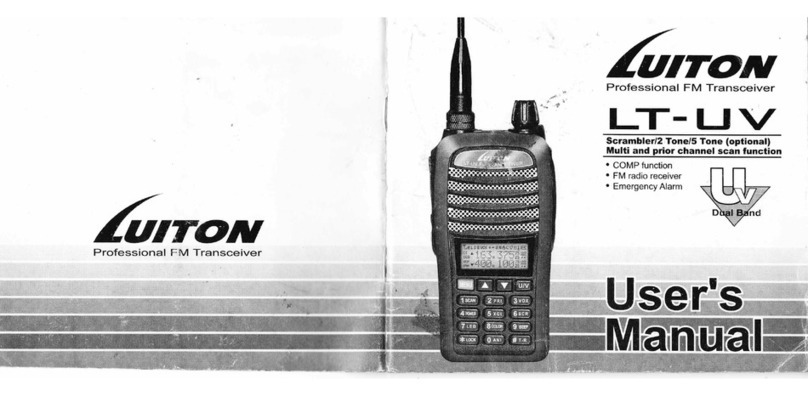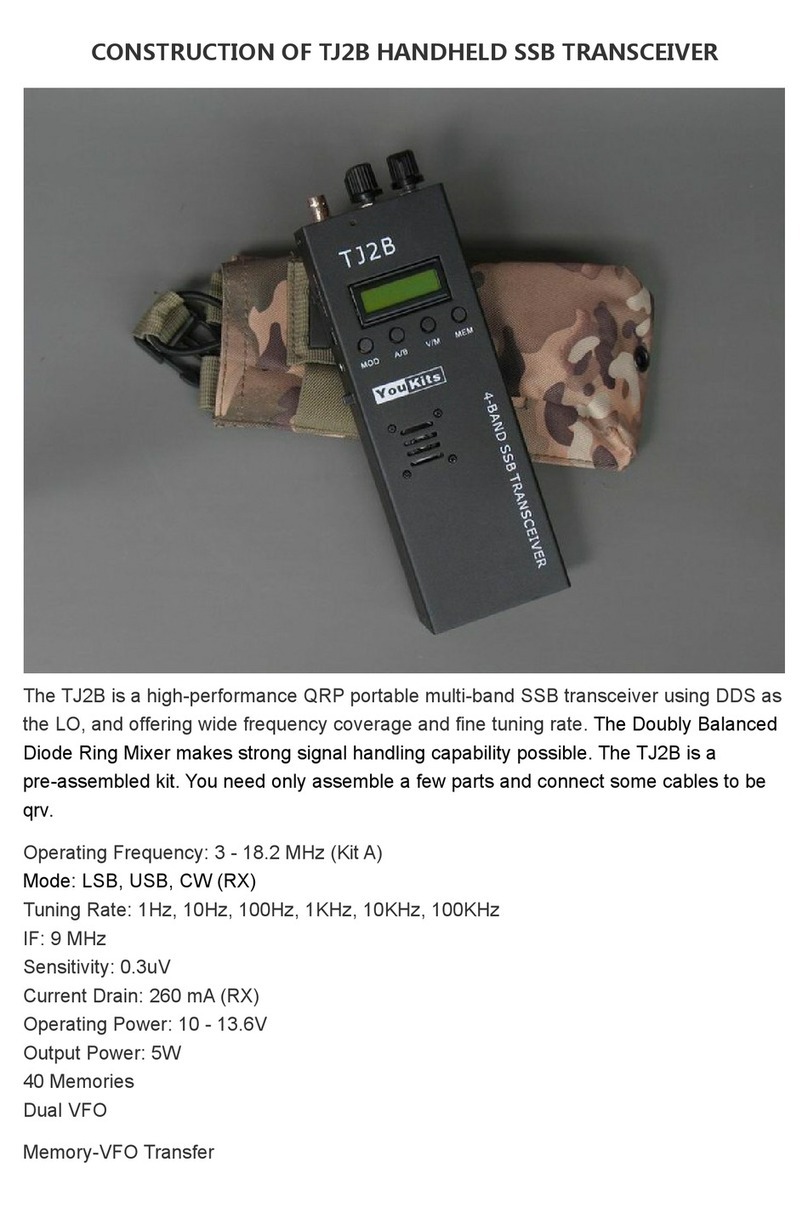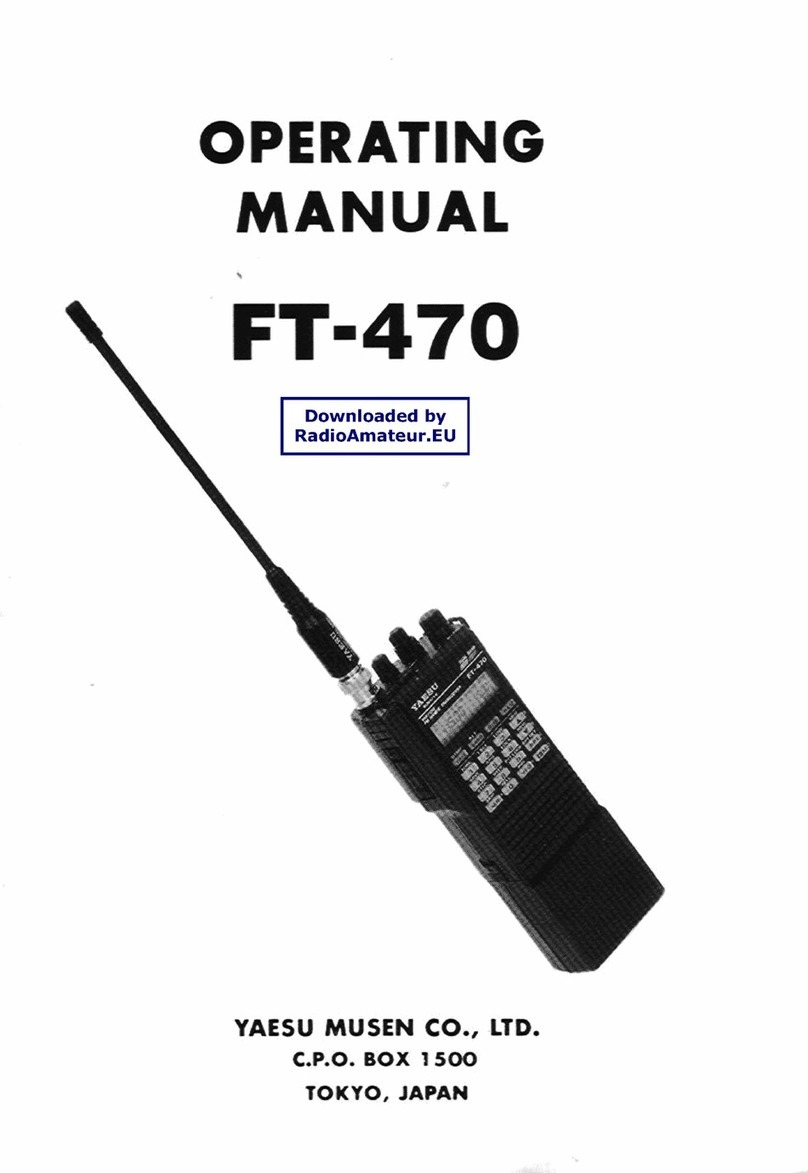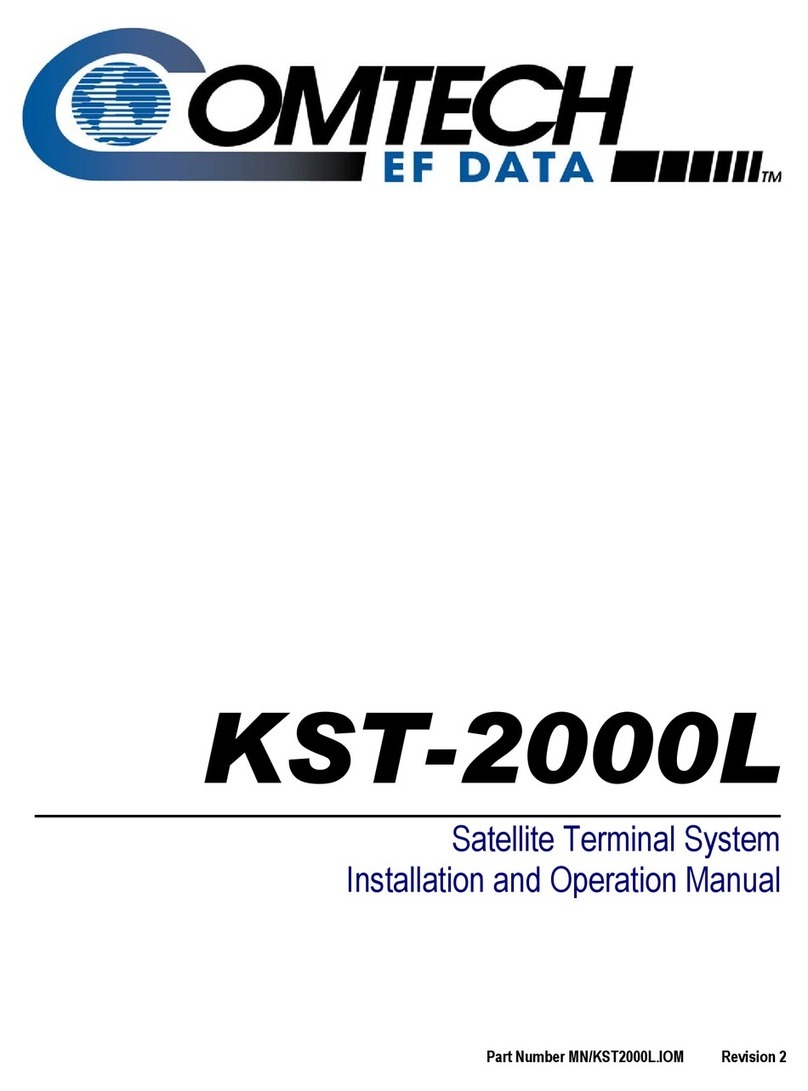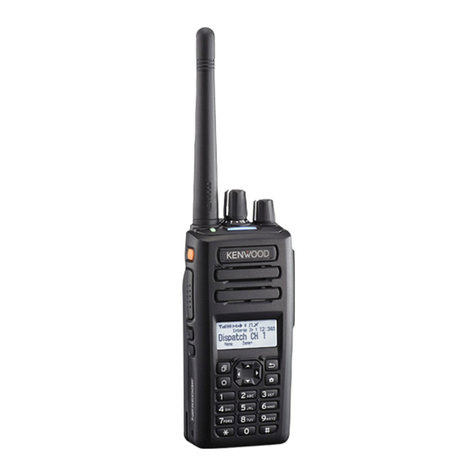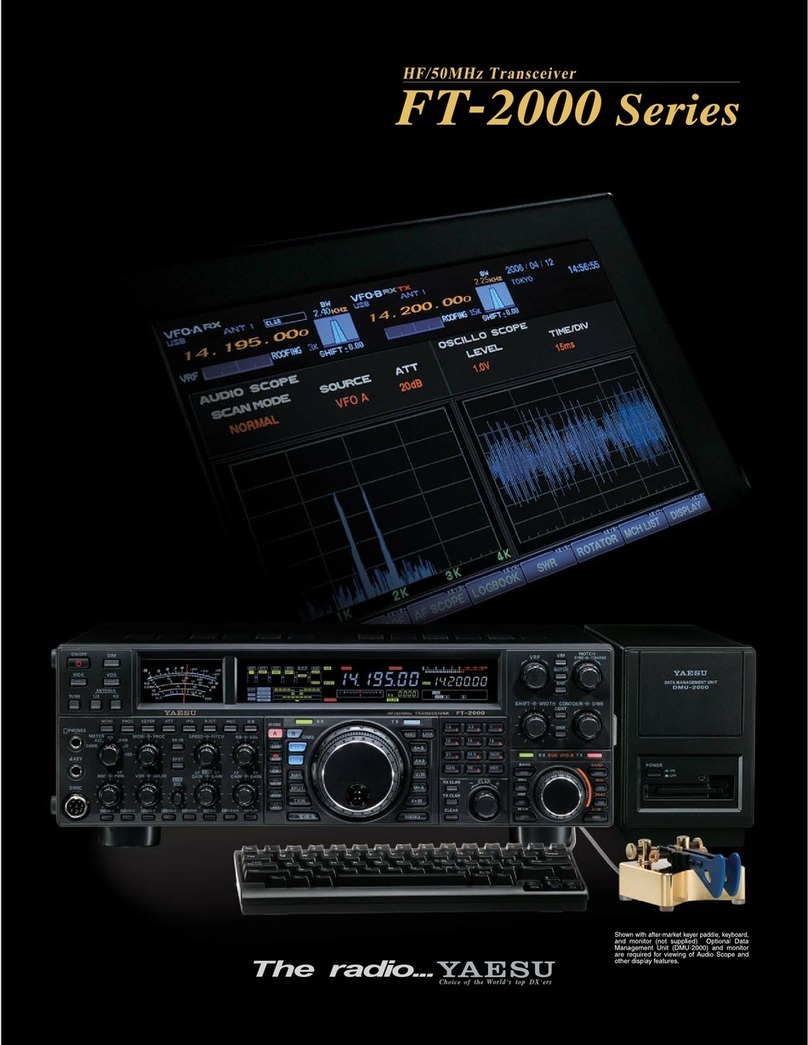8
2
PANEL DESCRIPTION
MEMORY CH 1/2/3/4 KEYS “CH1” “CH2” “CH3” “CH4”
Push to select the memory channels 1 to 4 directly.
MONI KEY “MON”
➥Push to mute and release the CTCSS (DTCS) or 2-tone
squelch mute. Open any squelch/deactivate any mute
while pushing and holding this key. (LMR operation only)
➥Activates one of (or two of) the following functions on each
channel independently: (PMR operation only)
• Push and hold to un-mute the channel (audio is emitted; ‘Audible’
condition).
• Push to mute the channel (sets to ‘Inaudible’ only).
• Push after the communication is nished to send a ‘reset code’.
(5-tone/BIIS operation only)
NOTE: The un-mute condition (‘Audible’ condition) may
automatically return to the mute condition (‘Inaudible‘
condition) after a specified period.
LIGHT KEY “LIGT”
Push to turn the transceiver’s backlight ON temporarily only
when the backlight function is turned OFF in user set mode.
LOCK KEY “LOCK”
➥Push and hold for 1 sec. to electronically lock all program-
mable keys for preventing accidental frequency changes
and unnecessary function access except the following:
[PTT], [Call] (incl. Call A and Call B), [Moni(Audi)],
[Light], [Emergency], [Surveillance], [Lone Worker] and
[OPT 1/2/3].
➥
Push and hold for 1 sec. again to turn the lock function OFF.
LONE WORKER KEY “LONE”
Push to turn the Lone Worker function ON or OFF.
• If the Lone Worker function is activated, the Emergency function is
automatically turned ON after the specified time period has passed
with no operation is performed.
HIGH/LOW KEY “H/L”
Push to select the transmit output power temporarily or per-
manently, depending on the pre-setting.
• Ask your dealer for the output power level for each selection.
TONE/RAN CH SELECT KEY “T SEL”
➥While in the analog mode operation, push to enter the
continuous tone channel selection mode. Then select the
desired tone frequency/code setting with [CH Up] or [CH
Down]. After the selection, push this key again to set.
➥While in the digital mode operation*, push to enter the RAN
channel selection mode. Then select the desired RAN set-
ting with [CH Up] or [CH Down]. After the selection, push
this key again to set.
➥While in the mixed (digital and analog) mode operation*,
push to enter the continuous tone channel selection mode.
Then select the desired tone frequency/code setting with
[CH Up] or [CH Down]. After the selection, push this key to
set. After that, the RAN channel selection screen appears.
Select the desired RAN setting with [CH Up] or [CH Down].
After the selection, push this key again to set.
* Depending on version, digital and mixed (digital and analog) mode
operations are available only when the optional UT-126H digital
m o d u l at o r /d e m o d u l at o r u n i t is installed. Ask your dealer for details.
1
2
3
4
5
6
7
8
9
10
11
12
13
14
15
16




















